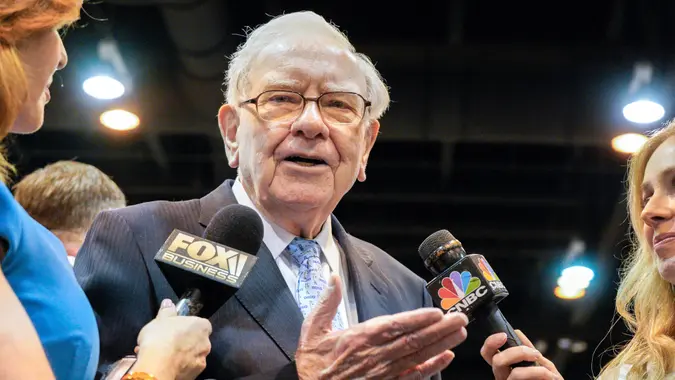Want To Earn What Your CEO Makes? 5 Shocking Truths About Your Paycheck Differences

Commitment to Our Readers
GOBankingRates' editorial team is committed to bringing you unbiased reviews and information. We use data-driven methodologies to evaluate financial products and services - our reviews and ratings are not influenced by advertisers. You can read more about our editorial guidelines and our products and services review methodology.

20 Years
Helping You Live Richer

Reviewed
by Experts

Trusted by
Millions of Readers
In 2024, Starbucks CEO Brian Niccol took home $95.8 million in total compensation, according to the American Federation of Labor and Congress of Industrial Organizations (AFL-CIO), based on company SEC filings.
That’s one person making nearly $100 million in a single year, while the average Starbucks barista earns about $15 an hour, per ZipRecruiter.
Even working full-time at that rate, it would take over 3,000 years to match what Niccol made in just one year. If you’re part-time, it would take over 6,000 years.
The CEO pay gap isn’t just wide, it’s a vast galaxy. And Starbucks isn’t the only company where this happens. Here are five truths that’ll change how you see your paycheck.
1. Some CEO Pay Gaps Reach Into the Thousands
In 2024, Starbucks reported a CEO-to-worker pay ratio in the thousands, but it still wasn’t the highest among major companies.
According to AFL-CIO, Abercrombie & Fitch, the CEO-to-worker pay ratio has been reported at over 6,000-to-1, meaning a median employee would need thousands of years to match a single year of the CEO’s earnings.
According to the AFL-CIO’s Executive Paywatch, the average S&P 500 CEO made $18.9 million in 2024, while the average worker made just over $60,000, putting the average CEO-to-worker pay ratio at 285:1.
In low-wage industries like retail and food service, the gap often reaches into the thousands.
Of course, pay gaps in S&P 500 companies will almost always be massive. These are some of the largest, most profitable corporations in the world, and their CEOs oversee operations on a global scale. But the sheer scale of today’s gaps isn’t just about company size. CEO compensation has grown far faster than typical wages, and in low-wage industries like retail and food service, the ratios aren’t just big, they’re astronomical.
2. CEO Pay Isn’t Just a Big Salary, It’s a Different Game Entirely
Most CEOs don’t make tens of millions from salary alone. Niccol’s base salary at Starbucks was a fraction of his total pay.
According to AFL-CIO, the real money comes from:
- Stock options and restricted stock units
- Performance bonuses
- Equity awards tied to share price performance
These can easily push compensation into the tens of millions, especially when a company’s stock surges. In Niccol’s case, the bulk of his nearly $96 million pay came from stock awards.
3. You’d Need Multiple Lifetimes To Catch Up
Let’s break down the math:
- Full-time barista at $15 per hour = $31,200 per year
- Niccol’s pay in 2024 = $95,801,676
That’s 3,070 years of full-time work to match his one-year paycheck. If you’re working part-time at 20 hours a week, you’d need more than 6,000 years. You could work every extra shift available, never take a vacation and still not get close.
4. Not Every Large Company Has a Massive CEO-to-Worker Gap
Not every company runs with a massive CEO-to-worker gap.
According to Costco’s 2024 Proxy Statement (DEF 14A), CEO Ron Vachris received $12.2 million in total compensation, translating to a 262:1 pay ratio between him and the median employee. While still substantial, it’s far lower than many other major retailers.
This is an example of how a business can choose to narrow the gap between executive and worker pay below industry averages.
5. If You Want CEO Money, There’s Only One Way
You could work 60 hours a week, skip vacations and never miss a shift, and you’d still be far from your CEO’s annual pay.
That’s because CEO-level earnings don’t come from wages. They come from ownership. Most CEOs earn the bulk of their compensation through stock awards, equity stakes and performance-based incentives that grow in value when the company thrives.
For the average person, the only realistic path to that kind of income is to reach a position where you share directly in a company’s profits and growth, either by leading it at the top or owning part of it.
 Written by
Written by  Edited by
Edited by 

























